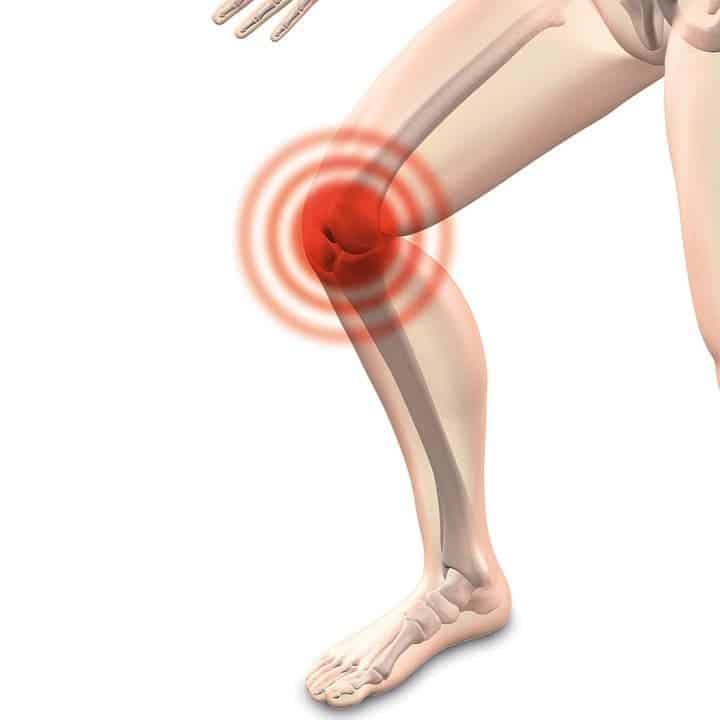An answer could be on the horizon for millions of people living with arthritis after scientists have found a way to repair joints using electrical implants. The implants work by producing a current every time the person moves their joint to regrow the protective cartilage that cover the ends of bones .

Bioengineers from the University of Connecticut developed a biodegradable mesh implant, about half a millimeter thick, which generated tiny electrical signals to repair arthritic joints in rabbits. The study, published in Science Translational Medicine, saw the team successfully regrow cartilage in rabbits’ knees without using potentially toxic growth factors or stem cells. Crucially, the cartilage that grows back is mechanically robust, with further plans to trial the implant in larger animals and humans.
In their white paper, the team states that although more work is needed to improve the scaffold, this study provides evidence that biodegradable implants that produce electricity independently can use exercise to treat arthritis.
No cure for arthritis despite tens of millions of sufferers
According to the CDC, 58.5 million people currently have arthritis in the United States, which costs the American people $303.5 billion annually. While there are treatments, arthritis technically has no cure.
It is a widespread and painful disease caused by damage to joints formed between the body’s bones. One of the subtypes of this disease, called osteoarthritis, attacks the cartilage at the end of bones in the joint. As this buffer deteriorates, bones begin to rub against each other so that everyday activities like walking become agonizingly painful – making the growth of new cartilage highly desirable.
Sufferers face years of pain without surgical or pharmaceutical intervention, but these treatments can only slow down the damage instead of repairing damage to the joint. However, even this process involves taking healthy cartilage from the patient or a donor and comes with inconveniences and risks.
Therefore, regrowing healthy cartilage in the damaged joint itself would be very helpful. Some researchers have investigated chemical growth factors to induce the body to regrow it; other attempts rely on a bioengineered scaffold to promote tissue growth. But, neither of these approaches works-even in combination-with the regrown cartilage breaking under the everyday stresses of the joint.
Your joints can generate electricity to heal you
The new breakthrough involves a tissue scaffold made out of poly-L lactic acid (PLLA) nanofibers, a material often used to stitch surgical wounds that dissolve after the person heals. The scaffold produces a little burst of electrical current when squeezed in a process known as piezoelectricity. In this case, the joint’s regular ‘squeezing’ is provided by walking, which generates a weak electrical field that encourages cells to colonize the implant and grow into cartilage.
“Piezoelectricity is a phenomenon that also exists in the human body. Bone, cartilage, collagen, DNA, and various proteins have a piezoelectric response. Our approach to healing cartilage is highly clinically translational, and we will look into the related healing mechanism”, says Dr. Yang Liu, a postdoctoral fellow in Nguyen’s group and the lead author of the published work.
Nguyen’s group implanted their scaffold in the knee of injured rabbits. After a month in recovery, the rabbits were encouraged to walk for 20 minutes a day on a slow-moving treadmill to exercise their legs and generate the electric current. The charge encouraged the regrowth of fresh, mechanically robust cartilage, making the knee as solid and functional as before it was injured. Whereas rabbits treated with nonpiezoelectric scaffold and exercise treatment still had a hole in this protective sheath and limited healing.
In an interview with New Scientist, Thanh Nguyen, an assistant professor in the department of mechanical engineering, says, “If used in people, the material used to make the implant would dissolve after about two months – although it could be tweaked to make it last longer.”
What next for this promising implant?
Nguyen states that the results are exciting but cautions that further tests need to be carried out on larger animals that bear more similarities to humans.
His lab now plans to observe the treated animals for 1-2 years to ensure the cartilage is durable and wants to test the PLLA scaffolds in older animals as arthritis usually affects the elderly. He concludes by saying that if the scaffolding helps older animals heal, it indeed could be a bioengineering breakthrough.


